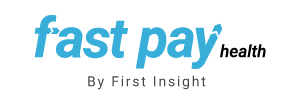7 Medicare Billing Dos and Don'ts to Guide Your Eye Care Practice
/Your eye care practice faces numerous challenges every day. You’re keeping up with constant Medicare regulatory and coding changes, declining reimbursements, or worse, getting Medicare to pay claims at all.
Are you noticing more Medicare claim rejections or denials appearing in your inbox? Review a few common Medicare billing dos and don’ts to guide your practice toward healthier revenue.
1. Don’t confuse Traditional Medicare with Medicare Advantage.
If a patient has a Medicare Advantage plan, do not bill traditional Medicare. Medicare Advantage benefits vary from plan to plan, bill different out-of-pocket fees, and have rules for how you get paid for your services. That’s why having eligibility and benefits verification is a critical first step in the intake process.
Our Medicare Advantage Billing Guide reviews challenges, solutions, and tips when submitting Medicare Advantage claims.
2. Use the Medicare Beneficiary Identifier when billing Medicare.
Since January 1, 2020, the Medicare Beneficiary Identifier (MBI) must be used when billing Medicare. This 11-character alphanumeric identifier replaces the old Social Security Number-based Health Insurance Claim Numbers (HICN). Ensure the MBI is entered correctly to avoid claim denials.
Always check your patient’s Medicare card and verify the patient's name and address are correct. If the information you have on file differs from the Medicare address you get on electronic eligibility transactions, ask your patient to contact Social Security and update their Medicare records.
Remember to replace the patient's SSN with the new MBI in the "Insured ID" field in your practice management software patient record to transfer the new ID to the e-claim and paper CMS-1500 form.
3. Don’t collect the Medicare Part B deductible until you confirm the deductible has been met.
Every calendar year, Medicare beneficiaries must meet their Medicare Part B annual deductible before Medicare makes a payment.
Suppose you “accept assignment” for Medicare Part B. In that case, CMS recommends not collecting the deductible from a patient until you receive the Medicare Part B payment or you have confirmed the deductible has been met for the year. The reason? If you see a patient early in the year, knowing if they met their deductible is more challenging.
If you over-collect, CMS may consider this program abuse, which can lead to part of the provider’s check being sent to the beneficiary on assigned claims. Or, if Medicare Part B determines they overpaid you, the Medicare Administrative Contractor (MAC) will send you a demand letter that outlines the repayment request.
4. Manage the patient’s transfer of care correctly.
Make sure you have a separate written transfer agreement for every patient. You must manage the patient’s transfer of care correctly and ensure that it is medically acceptable.
For example, if you are billing for cataract post-op co-management, the surgeon and co-managing optometrist must keep a signed copy of the transfer agreement in the patient’s medical record. And do not determine (standing orders) what post-op care the patient needs before the cataract surgery.
Check out our Medicare Billing Solutions for Cataract Post-Op Co-Management for billing tips and a practice case study.
5. Obtain an Advance Beneficiary Notice of Noncoverage
If you suspect that Medicare or commercial non-Medicare plans may not cover the service or test you will provide to the patient—and the patient may be responsible for out-of-pocket costs—obtain an Advance Beneficiary Notice of Noncoverage (ABN), Form CMS-R-31.
The ABN must be completed and signed by the patient BEFORE providing services or items not covered by insurance. Only continue the procedure once the patient signs an ABN and accepts financial responsibility for non-covered services. Always keep the signed ABN in the patient’s medical records. The ABN is invalid for any contractually obligated write-off.
Our Rules to Follow for Advance Beneficiary Notice of Noncoverage guide discusses when, why, and how to use an ABN form.
6. Don’t bill Medicare for services and materials you provide to your family members.
Medicare and other insurances do not allow you to bill your family members, such as spouses, parents (including step-parents), children (including step-children), grandparents, and siblings (including siblings-in-law) for services and materials.
However, other doctors in your practice can diagnose and treat another doctor’s family member and bill Medicare and other insurance companies.
7. Be diligent with LCD, MAC, NCCI edits and listserv updates.
Always check with your area’s Medicare carrier or other insurance company policies for up-to-date coding rules to ensure you are correctly coding your eye care claims. These rules can change as frequently as every quarter.
>> Watch On-Demand Webinar <<
Medicare billing resources
Medicare Vision Services Medical Learning Network Fact Sheet: This CMS fact sheet lists Medicare-covered vision services for certain beneficiaries, including intraocular lenses (IOLs), glaucoma screenings, and other related Medicare-covered services.
Medicare Physician Fee Schedule (MPFS) Lookup Tool: Search for pricing amounts, payment policy indicators, relative value units (RVUs), geographic practice cost index (GPCI) by a single or range of procedure codes, national payment amount, and a specific Medicare Administrative Contractor (MAC) or MAC locality.
Medicare Claims Processing Manual: Includes 38 chapters that review Medicare services claim processing instructions.
Medicare Coverage Database (MCD): Search by document ID, keyword(s), or CPT® and HCPCS codes. The database includes National Coverage Determinations and Local Coverage Determinations.
Insurance billing and RCM solutions that empower your eye care practice
The financial health of your practice depends on complete optometry and ophthalmology billing and revenue cycle management solutions. It’s critical to follow Medicare billing guidelines, use diagnosis and procedure codes and modifiers correctly, accurately document patient records and physician notes, and ensure claims are not under or over-coded.
Request a free billing and RCM practice analysis today. Or book an introductory call. Start enjoying the advantages of cleaner claims that focus on helping you get paid faster. Fast Pay Health works with ANY eye care practice management software.



